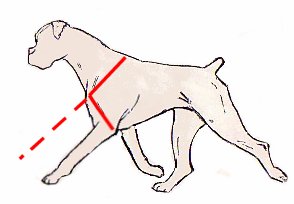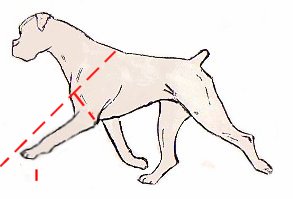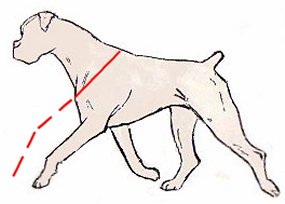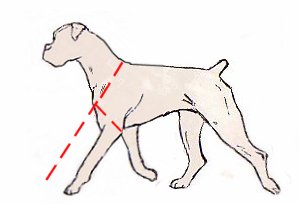
| More Heads | The Body | From the Rear | Movement | Standards | Anatomy | Famous Sires | Photo Gallery | Links |
| Differences Around the World | Body Style Comparisions | Beautiful Heads | Eye Shape | The Skull Shape | Optical Illusions |
| How Structure affects Movement | Choosing a Puppy | Contact Me |
HOW STRUCTURE AFFECTS MOVEMENT
Showing how the length of the upper arm affects timing:
 Correct
|
 Short Upper Arm + strong rear
|
The second dog will need to use more energy to cover the same distance
Showing how less rear angulation but good front angulation affects timing
 Correct
|
 Straighter Rear Angulation + good front
|
T
Now compare a dog with less front and rear angulation
 Correct
|
 Straight front and rear angulation
|
They mistake kinetic balance with toeing in! (Toeing in or out is a ligament problem)
Always look for the easiest, most ground covering, energy saving movement!
Go To Page: : 1 : 2 : 3 : 4 : 5 : 6 : 7 : 8 : 9 : 10 :
| Home | Judging Type | History & Purpose | Temperament | Colour | The Side View | From the Front | The Head |
| More Heads | The Body | From the Rear | Movement | Standards | Anatomy | Famous Sires | Photo Gallery | Links |
| Differences Around the World | Body Style Comparisions | Beautiful Heads | Eye Shape | The Skull Shape | Optical Illusions |
| How Structure affects Movement | Choosing a Puppy | Contact Me |
Copyright © Worldwide Boxer - All rights Reserved
Site design by Webpage World